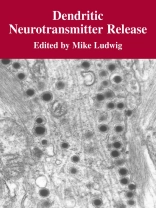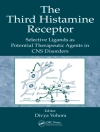The transmission of the nervous impulse is always from the dendritic branches and the cell body to the axon or functional process. Every neuron, then, possesses a receptor apparatus, the body and the dendritic prolongations, an apparatus of emission, the axon, and the apparatus of distribution, the terminal arborization of the nerve fibers. I designated the foregoing principle: the theory of dynamic polarization (Cajal 1923). Ever since the beautiful drawings from Golgi and Cajal, we have been familiar with the organisation of neurones into dendritic, somatic and axonal compartments. Cajal proposed that these cellular compartments were specialised, resulting in his concept of ^dynamic polarisation’. He considered dendrites to be passive elements that simply transferred information from inputs to the soma. Since the discovery that dendrites of many neural populations release neuroactive substances and in doing so, alter neuronal output, it is now apparent that this theory requires qualification. This book presents recent developments in the neurophysiology of dendritic release of several chemical classes of transmitters in a number of different areas of the mammalian central nervous system. Once released from a neuron, these substances can act as neurotransmitters and/or neuromodulators, to autoregulate the original neuron, its synaptic inputs, and adjacent cells or, by volume transmission, to affect distant cells. In some systems, dendritic transmitter release is part independent of secretion from axon terminal signifying a selective control of the dendritic compartment.
İçerik tablosu
Dendritic Neurotransmitter Release, from Early Days to Today’S Challenges.- Dendritic Neurotransmitter Release, from Early Days to Today’S Challenges.- Morphological Studies of Dendrites and Dendritic Secretion.- Morphological Studies of Dendrites and Dendritic Secretion.- The Lifecycle of Secretory Vesicles: Implications for Dendritic Transmitter Release.- The Lifecycle of Secretory Vesicles: Implications for Dendritic Transmitter Release.- Electrical Properties of Dendrites Relevant to Dendritic Transmitter Release.- Electrical Properties of Dendrites Relevant to Dendritic Transmitter Release.- Somatodendritic Dopamine Release in Midbrain.- Somatodendritic Dopamine Release in Midbrain.- Dopamine Release in Substantia Nigra: Release Mechanisms and Physiological Function in Motor Control.- Dopamine Release in Substantia Nigra: Release Mechanisms and Physiological Function in Motor Control.- Neurotransmitter Mechanisms at Dendrodendritic Synapses in the Olfactory Bulb.- Neurotransmitter Mechanisms at Dendrodendritic Synapses in the Olfactory Bulb.- Classical Neurotransmitters as Retrograde Messengers in Layer 2/3 of the Neocortex: Emphasis on Glutamate and Gaba.- Classical Neurotransmitters as Retrograde Messengers in Layer 2/3 of the Neocortex: Emphasis on Glutamate and Gaba.- The Thalamic Interneuron.- The Thalamic Interneuron.- Release of Noradrenaline in the Locus Coeruleus.- Release of Noradrenaline in the Locus Coeruleus.- Regulation of Somatodendritic Serotonin Release in the Midbrain Raphe Nuclei of the Rat.- Regulation of Somatodendritic Serotonin Release in the Midbrain Raphe Nuclei of the Rat.- Extrasynaptic Release of Dopamine and Volume Transmission in the Retina.- Extrasynaptic Release of Dopamine and Volume Transmission in the Retina.- Determinant Control of Neuronal Network Activity by Vasopressin and Oxytocin Released from Dendrites in the Hypothalamus.- Determinant Control of Neuronal Network Activity by Vasopressin and Oxytocin Released from Dendrites in the Hypothalamus.- Conditional Priming of Dendritic Neuropeptide Release.- Conditional Priming of Dendritic Neuropeptide Release.- Autocrine Modulation of Excitability by Dendritic Peptide Release from Magnocellular Neurosecretory Cells.- Autocrine Modulation of Excitability by Dendritic Peptide Release from Magnocellular Neurosecretory Cells.- Galanin, A New Candidate for Somato-Dendritic Release.- Galanin, A New Candidate for Somato-Dendritic Release.- Dendritic Dynorphin Release in the Hippocampal Formation.- Dendritic Dynorphin Release in the Hippocampal Formation.- Endocannabinoids and Gases.- Control of Synaptic Transmission in the CNS Through Endocannabinoid-Mediated Retrograde Signaling.- Trans-Synaptic Signalling by Nitric Oxide.- Somatodendritic H2O2 from Medium Spiny Neurons Inhibits Axonal Dopamine Release.- Hydrogen Sulfide as a Synaptic Modulator.












